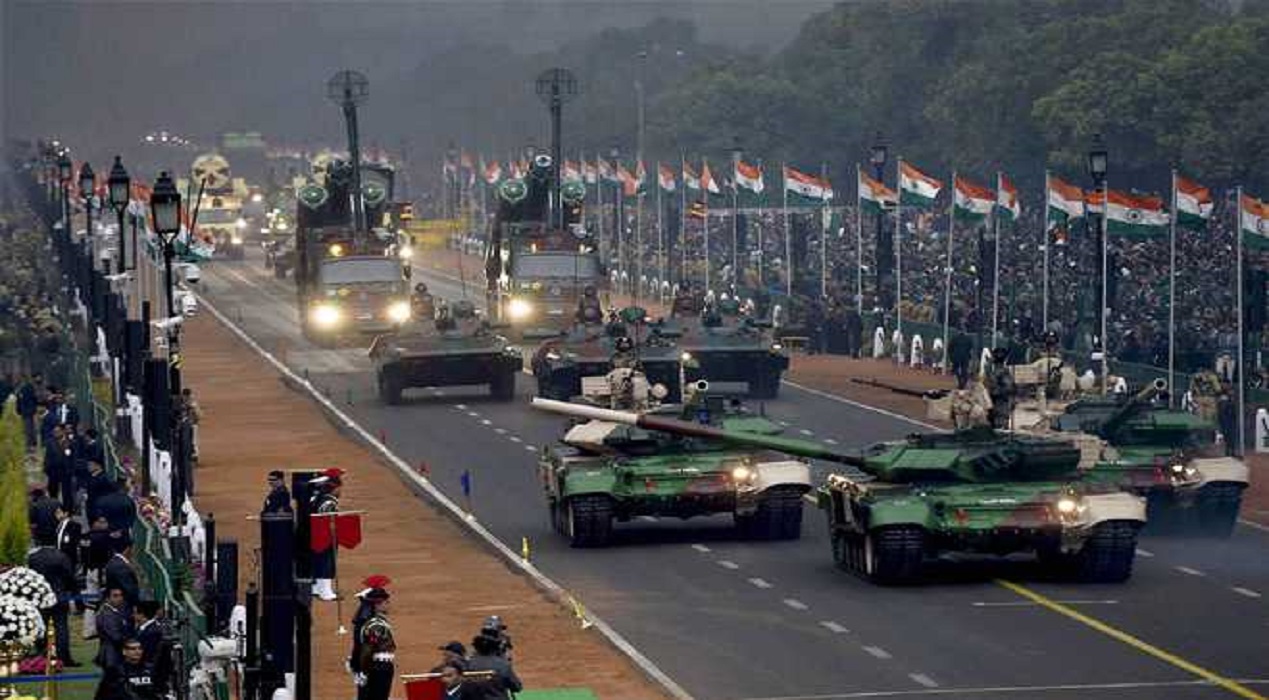At Rs 5,93,538, the overall defence budget for the financial year (FY) 2023-24 is one of the largest constituents of the union budget, trailing behind interest payments (Rs 10,79,971 crore) and capital expenditure (Rs 10,09,961 crore). This sounds prodigious, but the question is whether it is sufficient, considering the complex security challenges faced by the country. This perennial question can be approached from three perspectives: statistical, military, and economic-political.
From a statistical perspective, the allocation for the FY 2023-24 translates into a 13.02% hike over the current year’s budget estimates (BE), 13.18% of the total central government expenditure (CGE) and 1.97% of the estimated gross domestic product (GDP). The corresponding figures for the current year’s budget estimates (BE) vis-à-vis BE 2021-22 were 9.82%, 13.31%, and 2.04% respectively.
The 13.02% hike is much better than the 9.82% hike in the current year’s BE, but the picture changes dramatically if the former is calculated with reference to the revised estimates (RE) of the current year, for then it falls sharply from 13.02% to 1.5%, because of infusion of an addition Rs 59,625 at the RE stage.
The corresponding decrease in respect of the other two parameters is not as dramatic, but the fact that the allocation has fallen below 2% mark will surely raise an alarm, considering that the defence analysts have for long been arguing that the defence budget should be pegged at 3% of the GDP.
These statistics are not a good measure of judging the efficacy of the defence budget, mainly because there are no benchmarks with reference to which the adequacy of the allocated amounts could be assessed.
Should the year-on-year (y-o-y) increase be measured with reference to the preceding year’s BE or RE? What would be an appropriate hike in defence outlay in percentage terms? What would be an ideal share of the defence outlay in the CGE? Why is 3% of GDP considered to be the ideal level of funding? Indeed, can any such benchmarks be fixed for all times?
These, and many other related, questions cannot be satisfactorily answered. Consequently, statistics constitute good talking points, easily lending themselves to the conclusion that the defence needs are not matched by commensurate financial outlays, based on subjective benchmarking and financially unviable budgetary requirement forecasts.
From the military perspective, efficacy of the defence outlay depends on whether the allocated funds are sufficient to meet the requirement in a particular year. From this point of view, the revenue budget (Rs 2,70,120 crore) of the armed forces for the FY 2023-24 is something to cheer about for two reasons, though it may still be far below the requirement projected by the armed forces to the Ministry of Finance.
One, there is a y-o-y hike of 15.93% in the revenue budget, which is more than the estimated hike of 7%.[1] And two, the money available for operational expenditure within their overall revenue budget has gone up from 27.87% to 32.39%.
The operational expenditure comprises mainly the outlay for procurement of ordnance and other stores, execution of civil works related to maintenance of infrastructure, transportation of personnel and equipment, repairs and refit of naval vessels, and some other miscellaneous operational expenditure.
The upswing in the funds available for operational expenditure is the result of a commensurate decrease in the pay out on salaries which generally accounts for more than half of the revenue budget. The Indian Army (IA) has brought down its salary share from 70.78% in the current year to 65.09% in FY 2023-24, the Indian Navy (IN) from 49.82% to 39.57% and the Indian Air Force (IAF) from 60.95% to 51.40%.
What accounts for this dip is not presently clear, as there has not been any significant reduction either in the manpower or emoluments, but it will help in sparing more money for operational expenditure in the coming years if this trend can be sustained.
As for the capital outlay, although it has been increased by 6.71% to Rs 1,62,000 crore over the current year’s BE of Rs 1,52,370 crore, or 8.4% over the revised estimates (RE) of Rs 1,50,000 crore, it is far less than the 16% hike anticipated by the Ministry of Defence (MoD).[2]
Be that as it may, within the allocated capital outlay, the allocation for infrastructure development, undoubtedly spurred by the developments on the Line of Actual Control and the Indo-Pacific, has been raised by 32.73% from Rs 12,728 crore to Rs 16,895 crore.
Going by experience, the capital outlay is constricted by a significant portion of the allocation being consumed by the ‘committed liabilities’, or payments due in the coming year on account of previously acquired materiel, just as a significant portion of the revenue budget is tied up with the salaries. It is not known how much of the capital budget will go towards discharging these liabilities in the FY 2023-24, but past trends indicate that it could be as high as 80-90%, leaving limited funds for new acquisitions.
The budgetary outlay for the Defence Research and Development Organisation (DRDO), which is clubbed with the armed forces under the rubric of ‘defence services’, is pegged at Rs 23,264 crore for the FY 2023-24, more than half of which -Rs 12,850 crore- is allocated for capital expenditure. This amounts to a slightly more than 9% increase over the current year’s BE of Rs 21,330 crore, and approximately 3.91% of the total defence outlay.
It is arguable if this is enough to promote high-tech R&D and innovation, especially by the private sector, which is crucial for achieving Atmanirbharta, or self-reliance, in design and development of military equipment in the coming years. Incidentally, Finance Minister Nirmala Sitharaman had announced in her last year’s budget speech that 25% of the R&D budget was being set aside to finance design and development of military platforms and equipment by the private sector, but there is no indication in the budget for the FY 2023-24 of any allocation on this count.
The expenditure on defence pensions has gone up from Rs 1,19,696 crore to Rs 1,38,205 crore, accounting for more than 23% of the total defence budget for the FY 2023-24. The increase of Rs 18,509 crore is nearly double the BE to BE increase of Rs 10,230 in the capital outlay. The allocation for pensions, which was just Rs 11,000 crore two decades back in 2003-04, is bound to grow manifold in future thereby, constricting the availability of funds for the armed forces.
The Indian Coast Guard (ICG) and the Border Roads Organisation are not clubbed with the armed forces for the purpose of budgetary allocation, but they play a significant complementary role in shoring up maritime security and development of civil infrastructure in the sensitive border areas.
The allocation for the ICG had jumped from Rs 5,245 crore in 2021-22 to Rs 7,310 crore in the current FY, but it has been reduced to Rs 7,198 crore for the next financial year. This has led to a sharp decline in the ICG’s capital allocation from Rs 4,246 crore to Rs 3,536 crore, but its revenue or operational allocation has increased marginally from Rs 3,064 crore to Rs 3,661 crore. This could impact ICG’s capital acquisition programmes, though the increased revenue expenditure seems to indicate expansion of the force’s patrolling and surveillance activities along India’s long coastline.
The allocation for the Border Roads Development Board has, however, been increased by more than 30% from Rs 4,555 crore to Rs 6,005 crore for expediting strategically important infrastructure development along the disputed Line of Actual Control with an irredentist China.
To conclude, from the military perspective, the next year’s allocation is, as always, a mixed bag. What stands out is the increase in funds available for operational expenditure under the revenue segment of the defence services’ budget and less-than-anticipated increase in the capital outlay.
From the economic perspective, it is indisputable that there must be a substantial increase in the government’s revenue for it to be able to allocate more funds for defence without compromising on the competing demands of other sectors like health, education, environment, infrastructure development, welfare, and the like.
Additional revenues can be generated mainly by increasing the direct and indirect taxes, expanding the tax base, disinvestment, or increased borrowings. Each of these is circumscribed by serious economic and political constraints which need no elaboration.
Considering the imperatives of fiscal consolidation, pushing up capex to spur economic growth, containing the common citizens’ tax burden, and striking a fine balance between the competing demands, none of which can be downplayed, the 13.02% y-o-y increase in the overall budget is probably the best the Finance Minister could do. It is now for the armed forces to make the best use of the allocated funds.
Endnotes :
[1]Based on the inputs from the Ministry of Defence, fifteenth Finance Commission had drawn up a table in its October 2020 report (Table 11.5) of the anticipated allocation from 2021-22 to 2026-27, based on the assumption that revenue and capital budget will grow by 7% and 16% respectively per annum over BE 2021-22. Accordingly, the MoD expected revenue allocation of Rs 2,55,584 crore and capital outlay of Rs 1,69,784 crore for the FY 2023-24, against which the allocation is Rs 2,70,120 crore and 1,62,000 crore respectively.
[2]Ibid.
(The paper is the author’s individual scholastic articulation. The author certifies that the article/paper is original in content, unpublished and it has not been submitted for publication/web upload elsewhere, and that the facts and figures quoted are duly referenced, as needed, and are believed to be correct). (The paper does not necessarily represent the organisational stance... More >>
Image Source: https://images.tribuneindia.com/cms/gall_content/2017/2/2017_2$largeimg01_Wednesday_2017_152418689.JPG










Post new comment